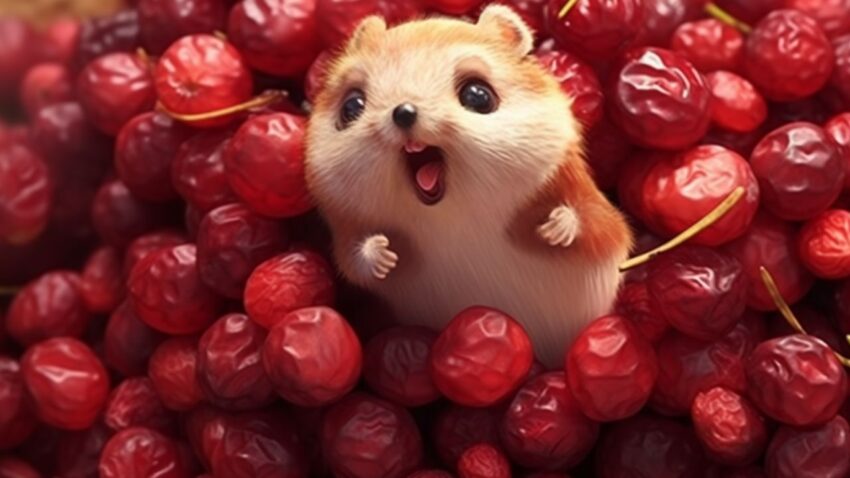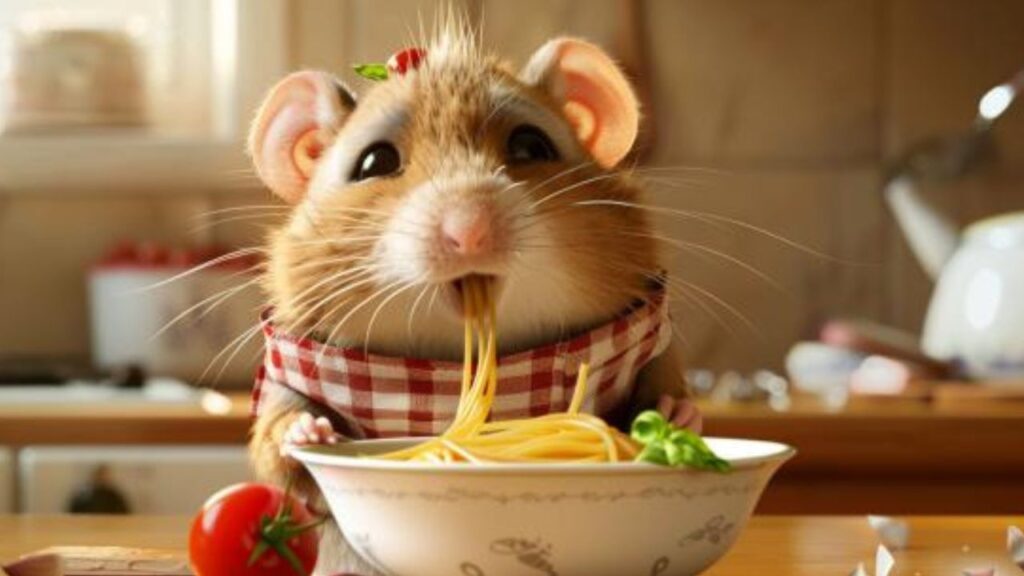TL;DR Summary
Dried cranberries are a beloved human snack, rich in dietary fiber, antioxidants, and certain vitamins. However, for hamsters, there are both pros and cons to consider. Nutritionally, dried cranberries can offer vitamins and minerals, but many store-bought versions have added sugars, making them potentially unsuitable for regular hamster consumption. Some rodentologists and hamster owners have shared mixed experiences and insights. If introducing dried cranberries to a hamster’s diet, it’s essential to do so slowly, in tiny portions, and monitor for any adverse reactions. Always prioritize hamster health and consult with a vet or expert when in doubt. Remember, a happy hamster is a wheel-y happy you!
The Everlasting Charm of Dried Cranberries: More Than Just a Snack?
Dried cranberries have nestled their way into the hearts and kitchens of many. Their vibrant hue, slightly tangy bite, and versatile nature make them a staple in human diets. From garnishing sumptuous salads to adding a pop of flavor in granolas, these dehydrated wonders have transcended their status from mere food to an essential element of culinary artistry. But their widespread use and undeniable appeal in our dishes and snacks often leave pet owners pondering: are they equally delightful and safe for our furry companions, particularly hamsters?
Deciphering the Query: Are Dried Cranberries a Hamster Treat or Threat?
For hamster enthusiasts, every tidbit of food we enjoy brings forth the age-old question: “Can my hamster eat this too?” It’s a testament to the deep bond we share with these tiny creatures, constantly ensuring their well-being. Dried cranberries, with their sweet-tart profile, seem like a potential treat, but there’s more to consider than just flavor. Nutritional content, digestibility, and potential risks versus rewards all come into play. In this comprehensive guide, we’ll delve into the heart of this matter, drawing from scientific findings and hands-on observations to answer this pressing question. Hold onto your hamster wheels; we’re about to embark on a cranberry-filled adventure!
The World of Dried Cranberries
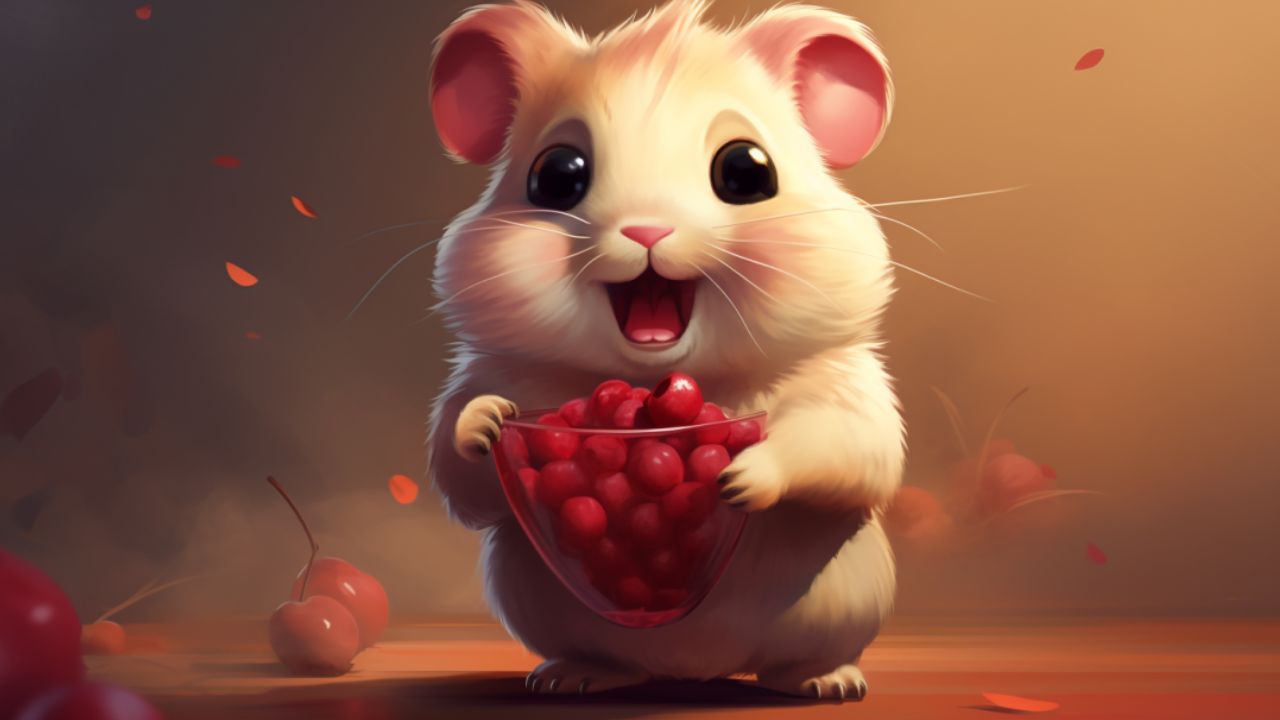
What’s in a Dried Cranberry? Nutritional Breakdown and Composition
Dried cranberries, often thought of as simple shriveled versions of their juicy counterparts, carry a distinct profile that makes them stand out. When cranberries undergo the drying process, it not only results in a concentration of their natural flavors but also alters their nutritional structure. Primarily, dried cranberries are a good source of dietary fiber, which aids in digestion. They also boast a reasonable amount of vitamins like vitamin C and E. Additionally, these berries contain beneficial antioxidants, known for their role in combating oxidative stress.
However, it’s crucial to note that many commercially available dried cranberries are sweetened, which means they can have a significant amount of added sugars. This is done to offset the tartness of the cranberry, making them more palatable for direct consumption. This addition of sugar might be acceptable for human consumption in moderation, but it’s a point of consideration when we think about our little hamster friends.
The Human Perspective: Why Dried Cranberries are Cherished
For many humans, dried cranberries are not just about their nutritional content but also about their versatility and flavor. Their sweet, tangy, and sometimes slightly bitter taste makes them an excellent addition to a myriad of dishes. Think about those delightful oatmeal cookies, the hearty salads sprinkled with these ruby gems, or even a simple trail mix that gets its zest from these berries. They serve as a bridge between health and taste, often turning bland recipes into gourmet delights.
Moreover, from a health-conscious viewpoint, dried cranberries have been touted for various potential benefits, including supporting urinary tract health and offering antioxidant properties. Their fiber content promotes digestive well-being, and the phenolic compounds they carry are believed to have anti-inflammatory properties. Such a combination of taste and health benefits has cemented dried cranberries’ position in human diets. But as we delve deeper into this article, we’ll evaluate whether these advantages and characteristics translate into benefits for our hamster companions or pose risks.
Scientific Dive: Dried Cranberries and Rodents
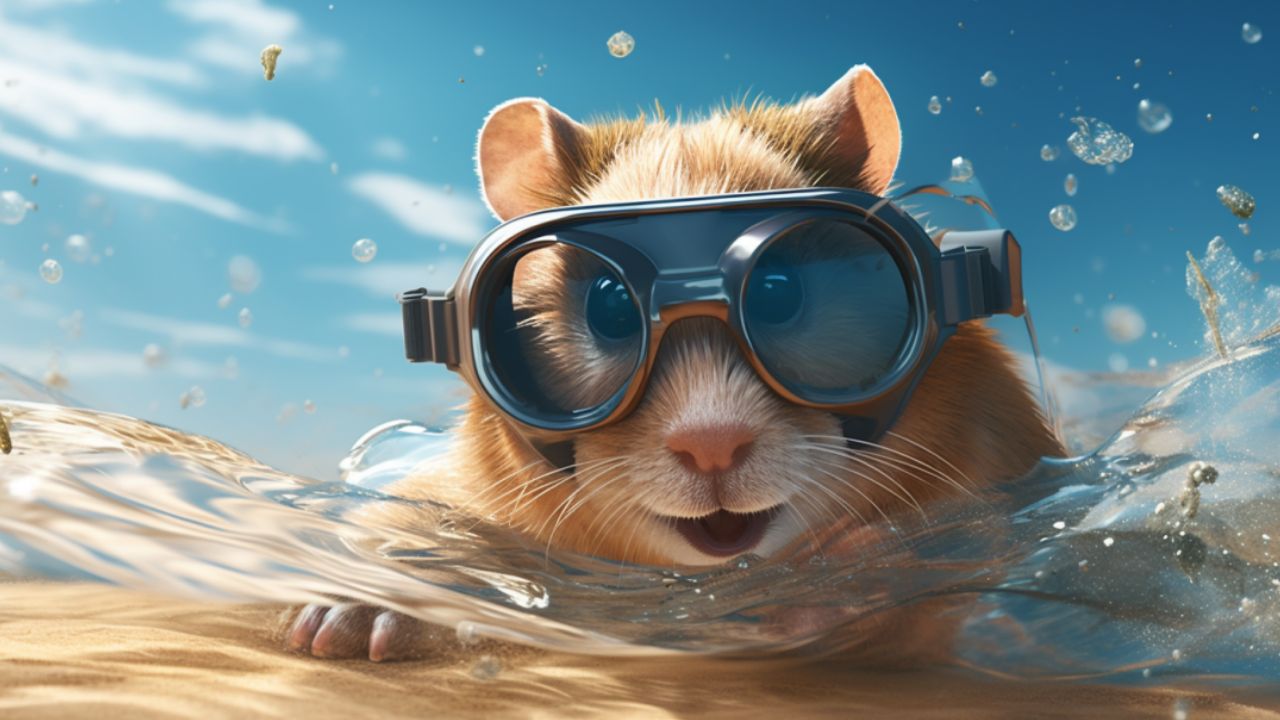
From Research Desks: Effects of Dried Fruits on Small Mammals
When diving into scientific literature focused on the dietary implications of dried fruits on small mammals, the nuances become strikingly clear. Dried fruits have indeed been extensively studied due to their potential health benefits, but also for their prospective risks when introduced into the diets of smaller creatures.
For humans, dried fruits serve as a concentrated source of vitamins, minerals, and antioxidants. Yet, when we turn our attention to rodents, especially our beloved hamsters, their digestive and metabolic systems present a different story. These systems differ significantly from those of humans, and as such, what stands as a nutritious element for us might be problematic for them. It’s been observed that certain dried fruits, when not moderated, introduce a higher sugar content that could be detrimental, leading to conditions such as obesity and diabetes in small mammals.
Dr. Whiskerson’s Notes: The Dried Cranberry Chronicles
Having been keenly involved in rodent dietary studies and observing hamsters over the years, I’ve jotted down some critical observations about dried cranberries. They indeed carry the intrinsic properties of cranberries, but the drying process and the occasional additives change the game.
One can’t overlook the fact that a significant portion of the dried cranberries available in markets are sweetened. This addition, meant to balance the inherent tartness and make them more appetizing, poses a potential concern when considering hamster diets. Some hamsters have an affinity for these dried gems, with no immediate ill effects. However, over prolonged periods, certain hamsters, especially those fed sweetened variants, have shown signs of weight gain.
It’s also worth noting the individualistic dietary preferences of hamsters. While some may be absolutely smitten by dried cranberries, others might only give it a cursory nibble. Thus, when introducing such treats, a vigilant observation of their reactions and consumption patterns is pivotal. It provides a gauge of its suitability and assists in ensuring their overall well-being.
Potential Health Outcomes for Hamsters

The Good Side: Nutritional Gains from Dried Cranberries
It’s essential to acknowledge that dried cranberries aren’t merely dehydrated counterparts of their fresh version without their benefits. When properly sourced, these dried berries can indeed serve as tiny nuggets of nutrition.
Dried cranberries, first and foremost, retain a significant portion of the antioxidant properties of their fresh variant. These antioxidants are pivotal in combating oxidative stress in the body, which can lead to various health complications. Additionally, the dietary fiber present in dried cranberries can aid in digestion for hamsters, promoting smooth bowel movements and potentially preventing digestive disorders.
Moreover, vitamins like vitamin C and E present in these dried fruits could provide a mild immune boost, aiding in the overall well-being of the hamster. However, it’s vital to emphasize the word ‘could’ here. The nutritional content beneficial for humans doesn’t always translate directly to benefits for hamsters. Every treat introduced into a hamster’s diet should be done with caution and under close observation.
Words of Caution: Possible Dietary Hazards and Concerns
While there are potential benefits, there are also considerable concerns tied to introducing dried cranberries into a hamster’s diet, especially in unmoderated amounts. As previously mentioned, many commercially available dried cranberries are sweetened to enhance their palatability. This added sugar, though a delight for the human palate, can be a silent adversary for our tiny furballs.
Overconsumption of sugar, even if indirect through treats, can lead to obesity in hamsters. Obese hamsters are at a higher risk of developing diabetes, a condition notoriously difficult to manage in such small creatures. Excess sugar can also result in dental problems, which, given the nature of continuously growing rodent teeth, can manifest as overgrown or misaligned teeth, making feeding difficult.
Furthermore, the small size of hamsters means their stomachs are equally small. Overfeeding any treat, including dried cranberries, can lead to an imbalanced diet, potentially depriving them of essential nutrients found in their main staple foods.
Thus, as with any treat or dietary supplement, moderation is the key. It’s also recommended to provide unsweetened, organic dried cranberries if one is considering them as a treat, to minimize potential health risks and maximize potential benefits. Observing any changes in behavior, eating habits, or physical appearance is crucial when introducing new foods into their diet.
Whisker Tips
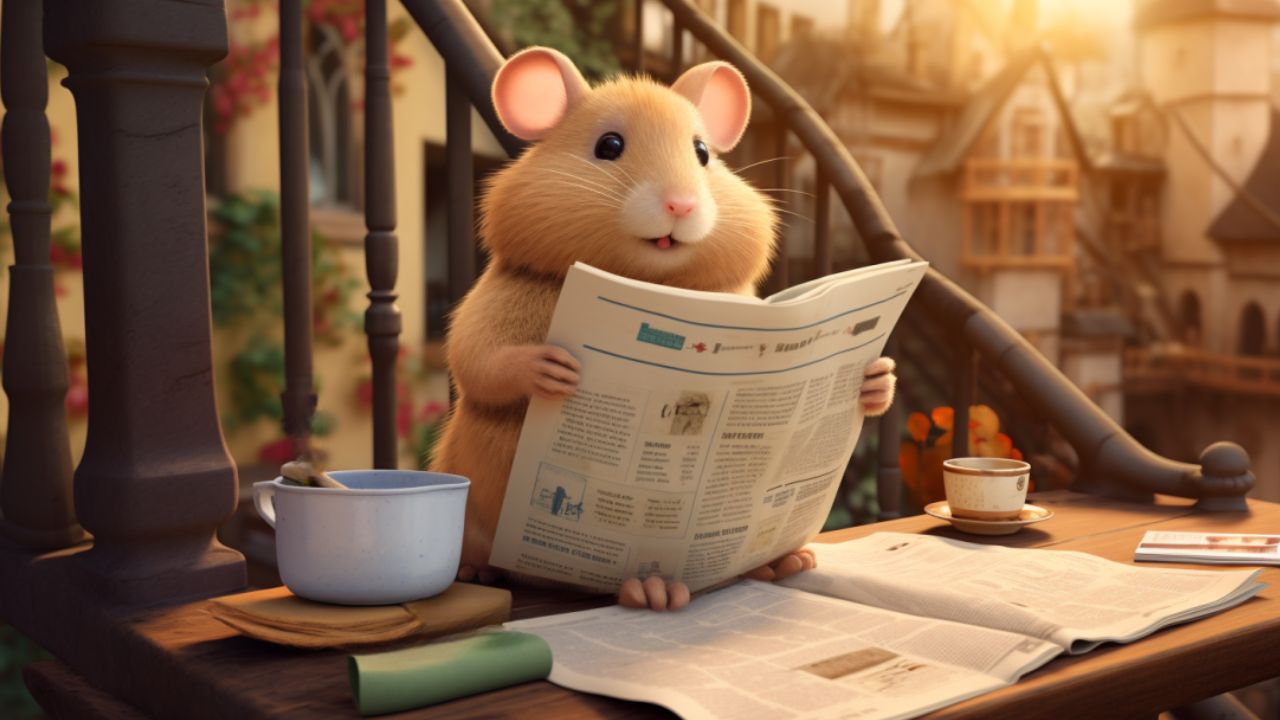
In this signature section, I aim to provide hands-on, practical advice for hamster caregivers. Ensuring our hamster companions get the best care requires a blend of knowledge, observation, and sometimes a touch of intuition. Here, we delve into the intricacies of introducing dried cranberries to your hamster’s diet and ensuring that it’s done safely.
Introducing Dried Cranberries: Guiding Your Hamster’s First Taste
When it comes to introducing any new food, especially treats like dried cranberries, a slow and steady approach works best. Here’s a step-by-step guide to ensure your hamster’s first encounter with dried cranberries is both safe and enjoyable:
- Quality First: Opt for unsweetened, organic dried cranberries. Remember, added sugars can be detrimental to your hamster’s health.
- Size Matters: Given the small size of hamsters, start with a tiny piece of dried cranberry, about a quarter of the size of their regular food pellets.
- Observation is Key: After giving your hamster the cranberry piece, monitor its behavior. Look for any signs of discomfort, digestive issues, or changes in fecal consistency.
- Gradual Introduction: If your hamster reacts well to the initial introduction, you can continue giving them dried cranberries, albeit sparingly and infrequently.
Measuring the Right Amount: Portion Guidelines and Frequency
Portion control is an essential aspect of feeding treats to hamsters. Due to their small size, even a minor overindulgence can lead to significant health concerns.
- Portion Size: As a general guideline, a piece of dried cranberry should not be bigger than a single food pellet that your hamster consumes. This ensures that they don’t overeat while still getting a taste of the treat.
- Frequency: Given that treats like dried cranberries should complement and not replace their staple diet, it’s advisable to offer them no more than once or twice a week. This not only ensures that your hamster doesn’t grow overly fond of the treat over its regular food but also minimizes the potential for health issues.
- Variety is the Spice of Life: While dried cranberries can be a delightful treat, remember to diversify the treats you offer. This provides a range of nutrients and keeps your hamster’s diet balanced.
- Storage: Always store dried cranberries in a cool, dry place. Before giving them to your hamster, check for any signs of mold or spoilage.
Remember, every hamster is unique. Some might adore dried cranberries, while others might prefer different treats. Always prioritize your hamster’s health and happiness, and use treats as a bonding opportunity and a supplement to their diet, not a staple.
Rodent Roundtable

In this section, we step outside the confines of a single expert’s viewpoint to explore the broader perspectives on the dried cranberry debate. By encompassing thoughts from renowned rodentologists and hands-on experiences of devoted hamster owners, we aim to paint a more comprehensive picture of this topic.
Expert Takes: Leading Rodentologists on the Dried Cranberry Discussion
The world of rodentology is vast and ever-evolving. When I reached out to my colleagues and fellow experts in the field, I was met with a myriad of opinions on the inclusion of dried cranberries in a hamster’s diet.
Dr. Henrietta Squeak, a prominent figure in rodent nutritional studies, remarked, “Dried cranberries, like many dried fruits, are high in sugars, albeit natural. It’s imperative that owners recognize the difference between what’s a staple and what’s a treat.” She further emphasized the importance of moderation, drawing attention to the potential risks of obesity and diabetes in hamsters if overfed sugary treats.
On the other hand, Professor Roderick Nibbleton of the National Institute of Rodent Research mentioned the potential benefits. “Cranberries, dried or otherwise, have shown potential urinary tract benefits in larger mammals. While the research is still in nascent stages for rodents, there’s a possibility that these benefits could translate to our tiny friends.”
The consensus? While dried cranberries can be introduced as a treat, moderation and observation are paramount. Always ensure that the primary diet remains nutritionally balanced and rich in essential nutrients.
Chewy Tales: Hamster Owners Share Their Experiences
For many, the theory is only one side of the coin. Practical experiences, often brimming with love, caution, and sometimes unexpected turns, provide invaluable insights. I reached out to the broader community of hamster enthusiasts to gather some firsthand accounts.
Liam, a long-time hamster caregiver, shared, “I introduced dried cranberries to Muffin, my Syrian hamster, about a year ago. I make sure they’re unsweetened and give them sparingly. She adores them! I’ve noticed no adverse effects, but I ensure they’re only an occasional treat.”
Conversely, Jessica, a mother of three dwarf hamsters, had a different story. “I tried giving dried cranberries a few times. Two of them loved it, but the third one, Pebbles, wasn’t too keen. I later noticed Pebbles drinking more water than usual after having them, so I’ve decided to steer clear.”
Such stories underline a vital point: individual reactions can vary. While some hamsters may relish dried cranberries and face no issues, others might be indifferent or even show mild adverse reactions. Owners should always prioritize their hamster’s unique preferences and well-being, ensuring that any new introduction to the diet is made cautiously and observantly.
7. FAQs: Dried Cranberries and Hamsters

One of the fantastic things about the rodent-loving community is the sheer curiosity and genuine concern for our hamster companions. Over the years, I’ve received countless questions about hamster diets, and dried cranberries are no exception. In this segment, we’ll address some of the most frequently asked questions, debunking myths and providing clear, scientific insights.
Addressing the Top Queries and Assumptions
1. Are all dried cranberries safe for hamsters?
Not necessarily. While the cranberry itself is not inherently harmful, many commercially available dried cranberries are laced with added sugars or other preservatives. Always choose unsweetened and natural variants when considering them as a treat for your hamster.
2. How often can I give dried cranberries to my hamster?
Think of dried cranberries as a special treat rather than a regular dietary staple. Once a week, in small amounts, is a reasonable frequency. Remember, moderation is the key!
3. Can dried cranberries replace fresh fruits in my hamster’s diet?
No, dried cranberries shouldn’t replace fresh fruits. They can be an occasional treat, but fresh fruits provide hydration and other nutrients in their natural state that dried variants might lack.
4. My hamster doesn’t seem to like dried cranberries. Is that normal?
Absolutely! Just like humans, hamsters have their preferences. If your little buddy doesn’t take to dried cranberries, it’s perfectly okay. There are plenty of other healthy treats to explore.
Dr. Whiskerson’s Clarifications: Dispelling Cranberry Confusion
Given the myriad of information, and sometimes misinformation, floating around, I find it necessary to lend my expertise to some widely circulated claims.
1. “Dried cranberries help in treating urinary tract issues in hamsters.”
While cranberries have been associated with urinary tract health benefits in larger mammals, conclusive research regarding hamsters is still in its infancy. Thus, while there’s potential, it’s premature to make this claim outright.
2. “Hamsters can get addicted to dried cranberries due to their sugar content.”
This statement has a kernel of truth. Hamsters might show a strong preference for sweet treats due to their palatability. However, the term “addicted” might be an exaggeration. Still, it’s essential to ensure a balanced diet and not overfeed sugary treats.
3. “If dried cranberries are good for humans, they must be good for hamsters too.”
This is a common misconception. While there are overlaps, hamsters have unique dietary needs and digestive systems. What’s beneficial for humans might not always be suitable for our furry friends. Always assess foods from a hamster-centric perspective.
Remember, when in doubt, always opt for what’s best for your hamster’s health and happiness. While dried cranberries can be a delightful treat, their introduction should be cautious, and their consumption monitored.
Decoding the Dried Cranberry Conundrum

The journey through the dried cranberry realm has been both intriguing and informative. As with all dietary considerations for our hamster companions, the goal is to strike a balance between nutrition, safety, and palatability. Dried cranberries, with their tangy charm, have shown both potential benefits and concerns that need acknowledgment. As we wrap up, let’s distill our findings and clarify the position of dried cranberries in the hamster dietary landscape.
Taking Stock: Are Dried Cranberries on the Hamster Menu?
In essence, dried cranberries can be a part of the hamster menu, but with a few caveats. Their natural vitamin and antioxidant content can be beneficial, but the often-added sugars in commercially available products pose a challenge. Thus, if you’re considering introducing dried cranberries to your hamster’s diet:
- Selectivity is key. Always opt for unsweetened and preservative-free variants. This ensures that your hamster is getting the natural goodness without the added concerns of sugar.
- Moderation is crucial. Even in their purest form, dried cranberries should remain an occasional treat. This not only prevents overconsumption but also ensures a varied and balanced diet for your furry friend.
- Observation is essential. As you introduce any new treat, always monitor your hamster’s reactions. Not all hamsters may take to dried cranberries, and that’s perfectly okay. Their preference and health should always be at the forefront.
The Prime Directive: Always Choose Hamster Health
The underlying principle in every dietary choice, be it dried cranberries or any other treat, should always revolve around the well-being of your hamster. While exploration and dietary variety can be exciting, it should never come at the expense of health. As hamster guardians, our role is to provide the best possible environment and nourishment for these delightful creatures. If ever in doubt, it’s best to err on the side of caution.
In the vast world of hamster nutrition, dried cranberries are but a small chapter. Yet, their consideration underscores the broader principle: A well-informed, deliberate choice is the hallmark of responsible pet ownership.
Dr. Whiskerson’s Dried Cranberry Farewell

As we conclude our in-depth exploration into the world of dried cranberries and hamsters, it’s time to reflect on the myriad of discoveries and insights that this topic has unveiled. The goal, as always, was to offer an exhaustive analysis that caters to both novices and experts, ensuring that every hamster enthusiast can make informed decisions based on scientific evidence and practical experience.
Pondering the Fruitful Findings
Dried cranberries, those delightful morsels that have graced many human tables, were put under the microscope (not literally, of course) to discern their suitability for our tiny furball companions. The journey has unveiled a tapestry of nutritional facts, research-backed observations, and real-world anecdotes. And while they are undeniably tantalizing, these tiny dried fruits bear complexities that warrant careful consideration.
What resonates deeply is the symbiotic relationship between knowledge and responsibility. In the universe of hamster care, every bite they take, every morsel they chew, reflects the choices we make for them. And as we’ve journeyed through this dried cranberry saga, it’s evident that making those choices requires an amalgamation of scientific understanding, a dose of practical wisdom, and a sprinkling of love and care.
The Signature Exit
The quest for knowledge is endless, and the dried cranberry episode is just one of the many adventures we embark upon to ensure the well-being of our hamster companions. Whether you decide to introduce these tangy treats into your hamster’s diet or opt for other alternatives, always remember the cardinal rule: The health and happiness of our pets are paramount.
And with that, dear readers, I bid you farewell on this particular topic, but as always, our quest for knowledge continues. Until we meet again on another whisker-twitching adventure, remember: A happy hamster is a wheel-y happy you!

